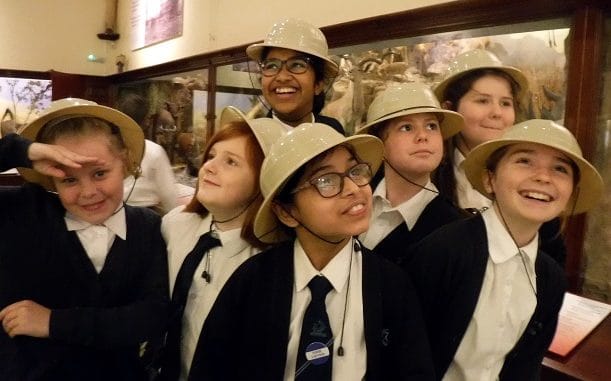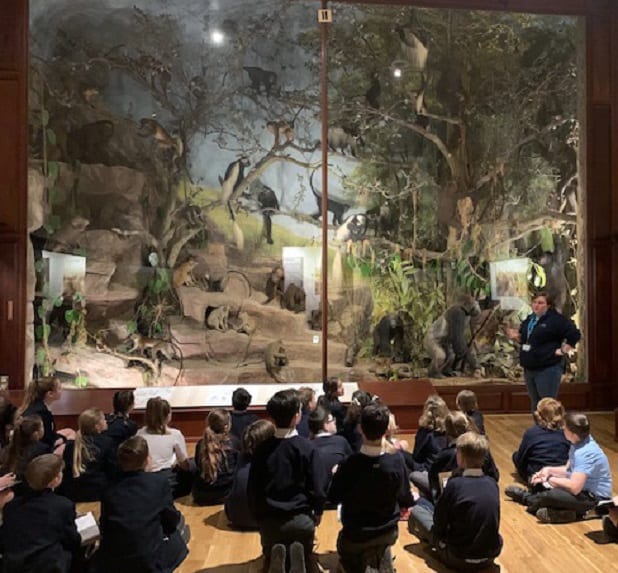
Upton Primary School children exploring their Circle of Life studies have enjoyed a voyage of discovery to the Powell-Cotton Museum at Quex Park in Birchington.
The Year 6 pupils from Broadstairs saw the world of natural history unfold in the many dramatic dioramas that display animals against representations of their natural habitats.
The children also handled historically important and rare objects and artefacts, and the overall experience encouraged them to make important educational knowledge links to previous learning.
The museum experience also offered opportunities for debates about the impressive and extensive collection.
There was also outdoor learning on completing a lichen survey (linked to Science and the story of the peppered moth), the opportunity to look at African printing which pupils have studied in Design and Technology.

In Science Year 6 looked at ‘classification’ and the Quex trip allowed the children to discuss what they had learnt. In History they have studied Charles Darwin and evolution, and the museum provided the perfect opportunity to look at the similarities and differences to ours.
Children linked their learning from previous years and had the opportunity to hold real artefacts as well as ask questions whilst being given an informative tour by expert guides.
Head of Year 6 Athanasia Papa-Adams said: “The Powell Cotton Museum was the perfect link to the Circle of Life topic and linked to each strand of learning.
“The impact was very thought-provoking for the children and they were able to articulate themselves well during a class debate on the collection at the museum.”
Head of School Darci Arthur added: “It is wonderful for our children to reinforce and expand their knowledge while enjoying such an outstanding resource and facility in their own area.”
*Powell-Cotton Museum background: The museum was built by Percy Horace Gordon Powell-Cotton in 1896 to house his growing collection of natural history specimens collected during his travels to Northern India and Tibet.

Percy didn’t just hunt and collect animals. From his earliest expeditions he took an interest in the people of the countries he travelled to and the objects they made and used. This resulted in him collecting a wide range of material that illustrated their lives and cultures. In fact, he was so interested in people and the way they lived that he, along with his wife and children, collected over 16,000 objects from the people he met during his expeditions.
Many subsequent trips to Africa added to the collections and, inspired by his lifetime of travel and adventure, Percy Powell-Cotton created a unique museum at Quex Park, to reflect the experiences of his travels and to show the world he discovered to people at home in England.
Following his death his son Christopher constructed additional galleries to display the family collections of archaeology, ceramics and weaponry. The museum now comprises eight galleries displaying many significant and world-class objects; many equal in importance to those held in national collections.
Find out more online at https://www.quexpark.co.uk/museum

